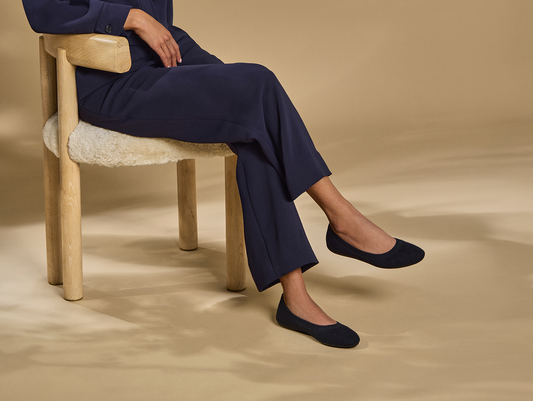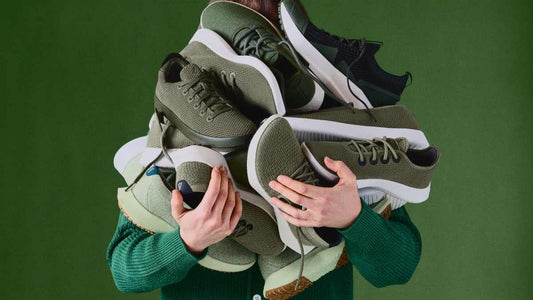ALLBIRDS ANNOUNCES THE WORLD’S FIRST ZERO CARBON SHOE
PLANET EARTH (3/21) – Allbirds has created the world’s first net-zero carbon shoe, the M0.0NSHOT. Its landmark carbon footprint — 0.0 kg CO₂e, versus an industry average of 14 kg CO₂e — was achieved without relying on offsets, after Allbirds completely reimagined the way it makes products.
This is one small footprint for a shoe, but could be one giant leap for the shoe industry, so Allbirds is open-sourcing the toolkit that took M0.0NSHOT to zero, and inviting others to follow in its footsteps.
“Creating a net-zero carbon shoe that is commercially viable and scalable is the culmination of our entire back-catalog of work. M0.0NSHOT isn’t a silver bullet for the climate crisis — it’s a proof-point that, when we take sustainability seriously, and are laser-focused on carbon reduction, we can make incredible breakthroughs,” says Tim Brown, co-founder and co-CEO of Allbirds.
M0.0NSHOT is the culmination of years of work and Allbirds’s focus on systematically reducing carbon in its business and products since its founding. In 2018, it created SweetFoam®, its first carbon-negative material, which informed the new foam used in M0.0NSHOT. Then, in 2020, Allbirds became the first fashion brand to label products with carbon footprints. A year later, the brand announced a partnership with adidas to collaborate on what was, at that point, the lowest carbon shoe in the world: the Adizero x Allbirds.
After this project, shooting for a net-zero carbon shoe became the natural next step. The Allbirds Futures Team—a cross-functional innovation team—took on that challenge in 2022, harnessing all of the brand’s previous learnings to design M0.0NSHOT.
This achievement was made possible by:
-
Carbon-negative regenerative merino wool upper: Grown on Lake Hawea Station (LHS) in New Zealand.
-
Carbon-negative sugarcane-based foam midsole: While most industry foams are primarily synthetic, Allbirds’s newly-developed SuperLight Foam boasts 80% bio content.
-
Carbon-negative bioplastic eyelets: Allbirds has teamed up with Mango Materials to deploy an innovative new process that uses microorganisms to convert methane — the greenhouse gas sheep release when they burp — into a form of polymer that can be moulded like other plastics, without the corresponding carbon footprint.
-
The most carbon-efficient packaging Allbirds has ever had: With reduced space and weight required to transport — made with sugarcane-derived, carbon-negative Green PE.
-
Carbon-conscious transportation: A considered transportation plan with biofuel-powered ocean shipping and electric trucking from port to warehouse.
In partnership with Lake Hawea Station and The New Zealand Merino Company, Allbirds is pioneering a new method of quantifying a product’s carbon footprint that accounts for materials and processes that capture carbon, as well as those that emit, to provide a more holistic view of emissions and, therefore, a more accurate picture of a product’s climate impact.
In other words, while some elements of the shoe’s creation emit carbon, others capture it, bringing the final product to net zero.
“We believe this will revolutionise the path to net zero, and act as rocket-fuel for the entire industry. We could spend decades debating the finer points of carbon sequestration, or we can innovate today with a common-sense approach,” says Hana Kajimura, head of sustainability at Allbirds. “It’s about progress, not perfection. The scientists have shown us what’s possible — now it’s time for the fashion industry to carry the open-sourced learnings from M0.0NSHOT forward.”









